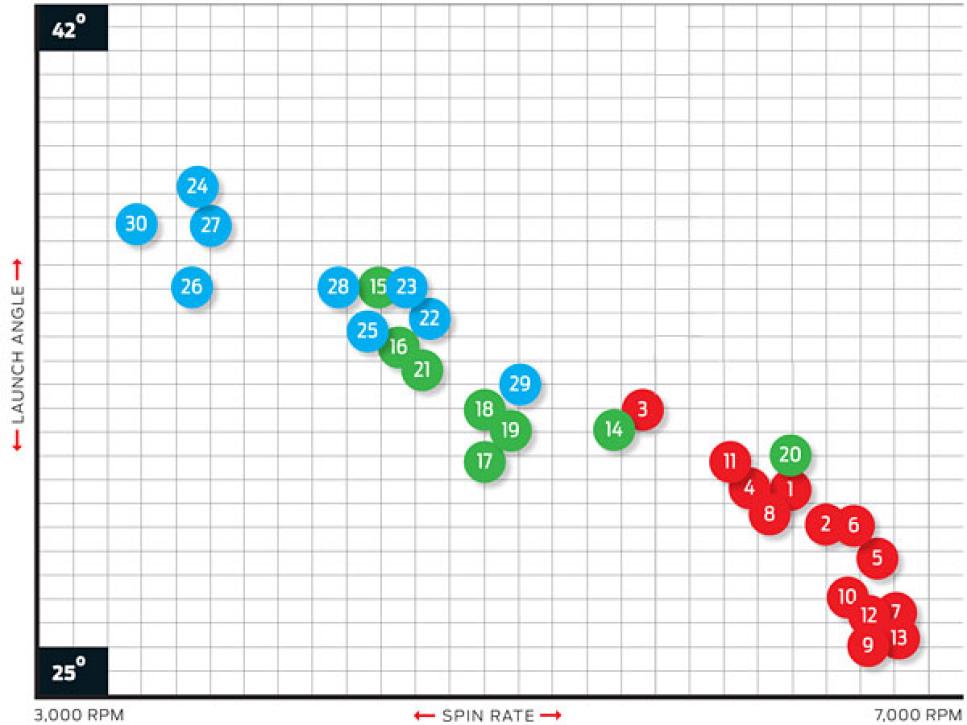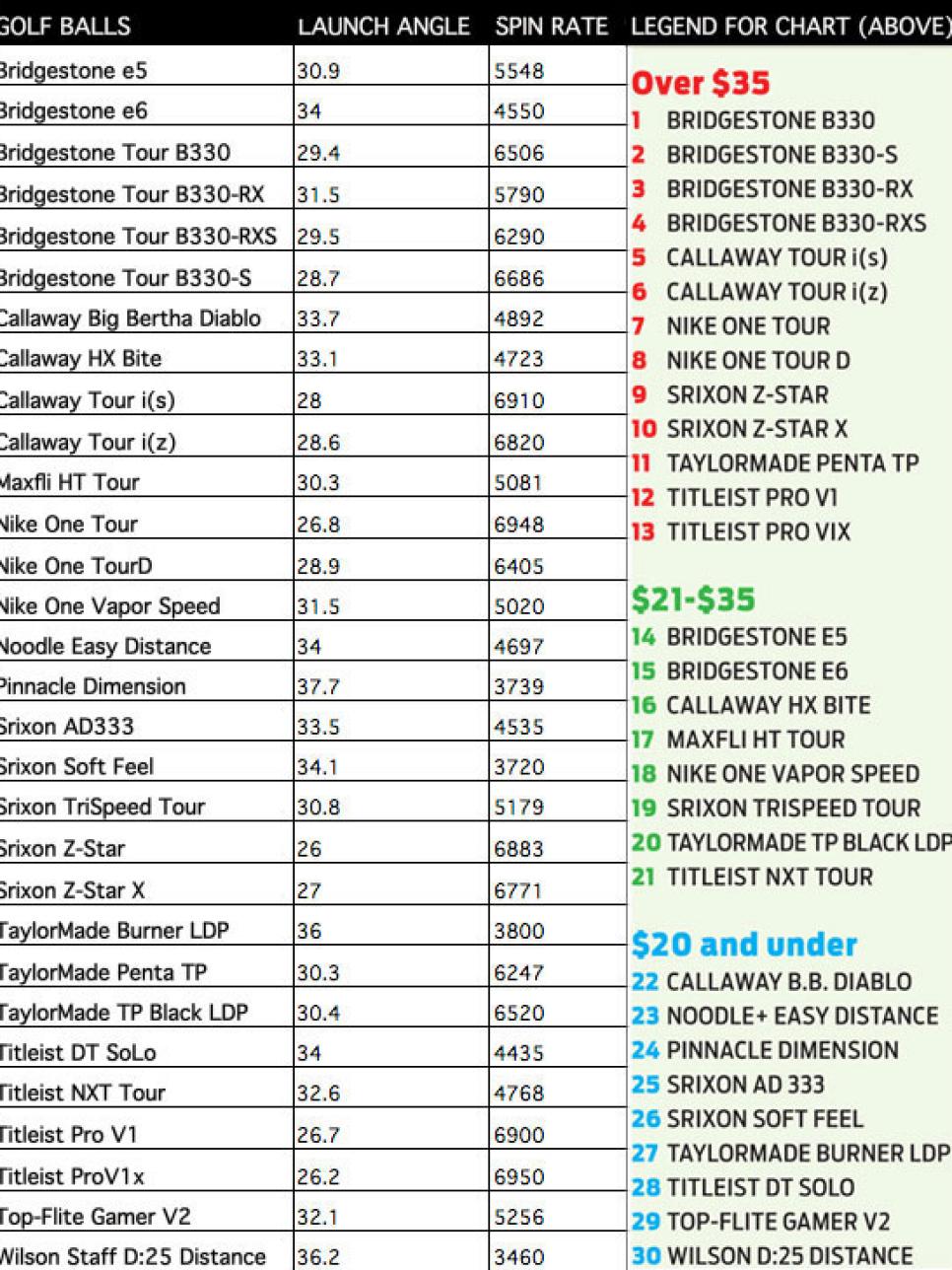Hot List
Wedge Spin and Launch

In this chart we plot the robot testing data for launch angle and backspin on half-wedge shots for all the balls on our Hot List. How does backspin affect the bounce and roll of a ball? Spin, especially on half-wedge shots, is a key to bounce and roll. So balls in the lower right of the chart (high spin) should stop the quickest; balls in the upper left (low spin) should roll out several feet farther. Also see expanded chart below of every golf ball on our Hot List, with its wedge spin and launch-angle information.

THE SEARCH
Finding A Better Ball The Company Way
Which ball should I play? It's a question golfers often ask, but they rarely find a satisfactory answer. (Our wedge spin/launch chart above might be one place to start.) Some manufacturers have set up online ballfitting tools and performance-based fitting programs, but overall this effort is at best incomplete, if only because each company's system excludes other ball brands.
Let's take a look at what's out there. The Bridgestone Golf Ball Fitting Challenge, a nationwide, launch-monitor-based program in its fourth year, evaluates a player's ball against the Bridgestone line, primarily using driver swings. There is also an online fitting tool you can use. Titleist has just launched a Web-based program in which a player answers a few questions to get two recommended balls from the Titleist line. Golfers then compare their on-course performance in short-game shots, long-game shots and feel to determine the preferred ball. The Web programs for Srixon and Wilson also use a hierarchy of questions (14 in Wilson's case!) about your usual game to come up with a recommendation.
Callaway, Nike and TaylorMade offer ballfitting as an option in their clubfitting programs. Many leading retailers also offer ballfitting, including Golf Galaxy, whose exclusive software selects the best fits for your distance, accuracy and spin needs.
Of course, finding the right ball is more complicated than getting fit for a driver or a set of irons because the ball needs to work with each club in the bag. Our suggestion: For starters, try to figure out what problem you most want solved (feel, spin, trajectory, dispersion and distance).
"I encourage golfers to make their ball choice based on the shots that are going to help them shoot the lowest score, and, of course, these are almost always shorter shots into the green," says Bill Morgan, senior vice president of golf-ball research and development for Titleist. "Golfers should try two different balls in the same scenario, and when they do, it's fairly easy for them to fit themselves."
-- E. Michael Johnson